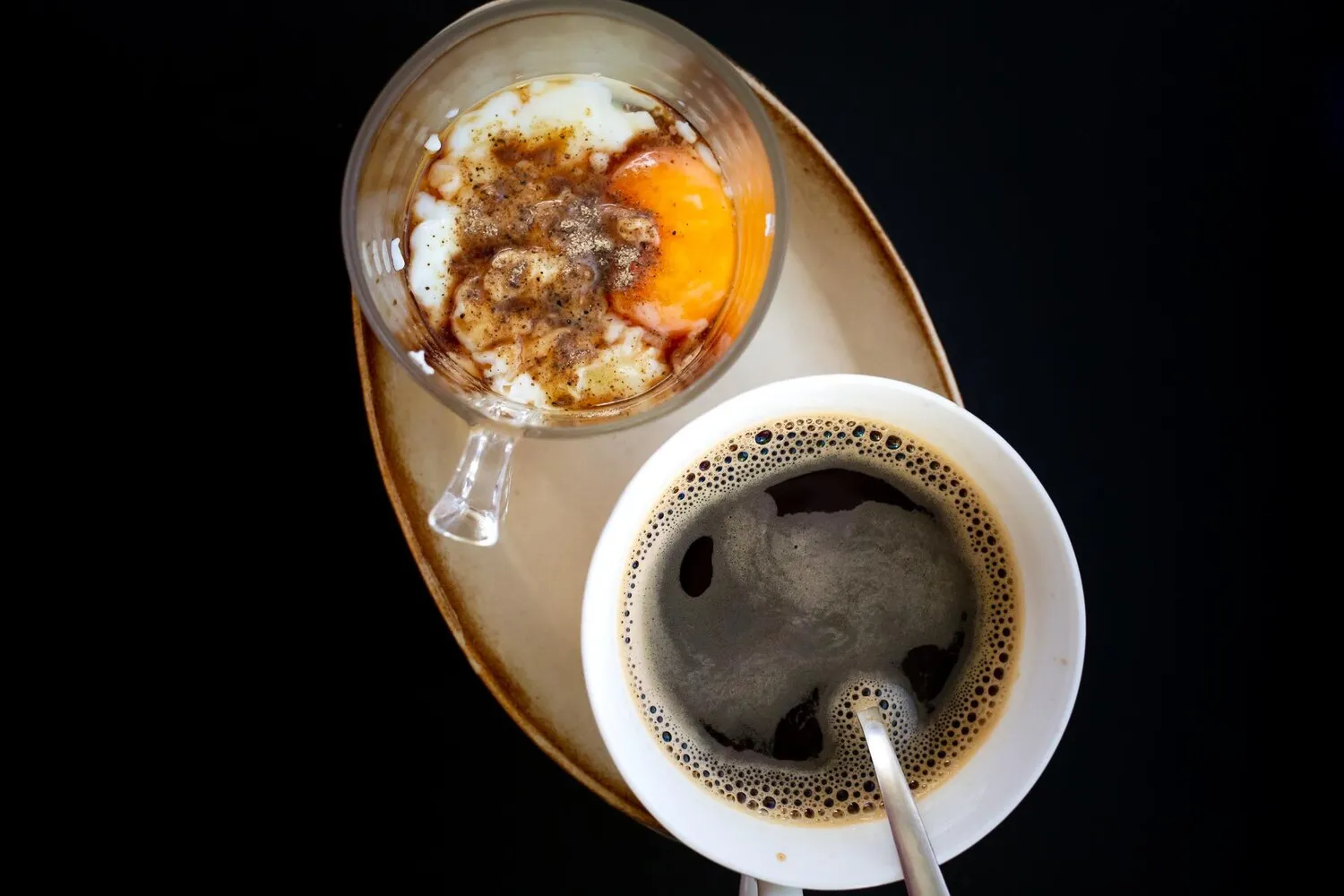
Latte Macchiato
Latte macchiato is a coffee beverage; the name literally means stained milk. This refers to the method of preparation, wherein the milk is 'stained' by the addition of espresso, as opposed to caffè latte where the coffee is poured into the milk.
Nutrition Facts
* The % Daily Value (DV) tells you how much a nutrient in a serving of food contributes to a daily diet. 2,000 calories a day is used for general nutrition advice.
Hoppenworth & Ploch Altstadt
The Latte Macchiato, meaning 'stained milk' in Italian, emerged as a drink primarily for children in Italy, allowing them to feel included in the coffee culture without the strong caffeine kick of espresso. It then evolved to become a popular choice for adults who prefer a milder coffee experience.
The Latte Macchiato reflects the Italian coffee culture's emphasis on simplicity and quality ingredients, offering a visually appealing and subtly flavored beverage.
Family-Friendly Coffee Culture
Initially intended as a drink for children, the Latte Macchiato exemplifies how Italian coffee culture incorporates family and caters to different preferences.
Aesthetic Presentation
The layered appearance of the Latte Macchiato in a tall glass reflects an appreciation for visual appeal in food and drink presentation, a common element in Italian culinary traditions.
Alternative to Strong Espresso
The drink provides an easy entry point for those not accustomed to the bolder flavor of a straight espresso or traditional cappuccino, demonstrating an inclusive coffee culture.
The Latte Macchiato offers a delicate balance of creamy milk and a hint of espresso, providing a layered flavor profile with a visual appeal.
The primary flavor is that of warm, steamed milk, offering a rich and smooth texture. The espresso shot adds a concentrated coffee flavor that cuts through the milk's sweetness, creating a subtle bitterness and aroma. Unlike a latte, the espresso is added last, resulting in a distinct layering effect where the coffee flavor is more pronounced at the beginning.
Layering Technique
Ensure the milk is adequately frothed to create a stable base for the espresso to sit on. Pour the espresso slowly and carefully to maintain the distinct layers.
Milk Temperature
Steam the milk to a temperature between 140-160°F (60-70°C) for optimal sweetness and texture. Overheated milk can scald and lose its natural sweetness.
Espresso Quality
Use a high-quality espresso blend for a richer, more aromatic coffee experience. The quality of the espresso greatly affects the final flavor of the drink.
Explore additional Coffee dishes and restaurants
Explore CoffeeDiscover top dining spots and culinary experiences in Frankfurt am Main.
Explore Frankfurt am MainLearn more about the food culture, restaurant scene, and culinary heritage of Germany.
Explore Germany